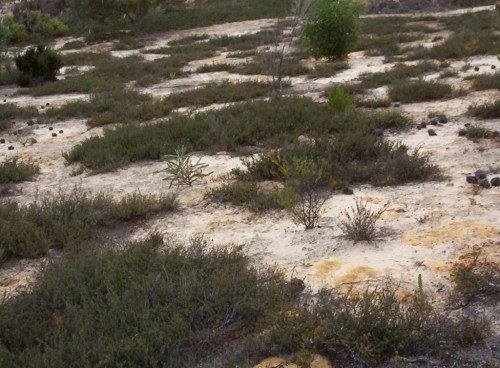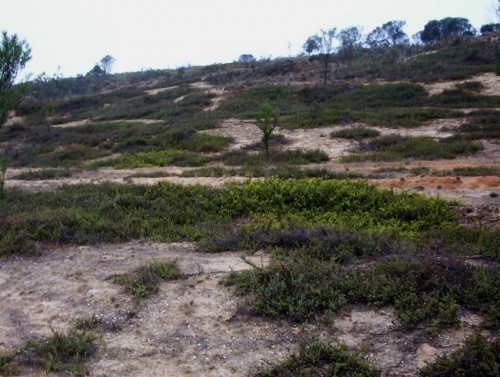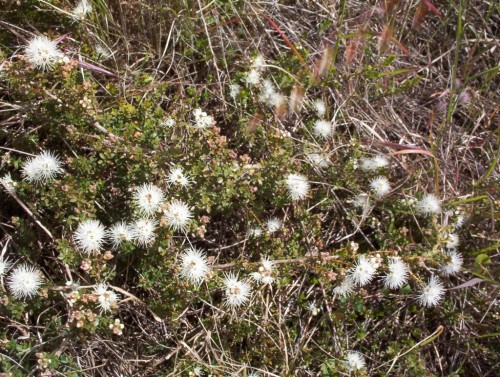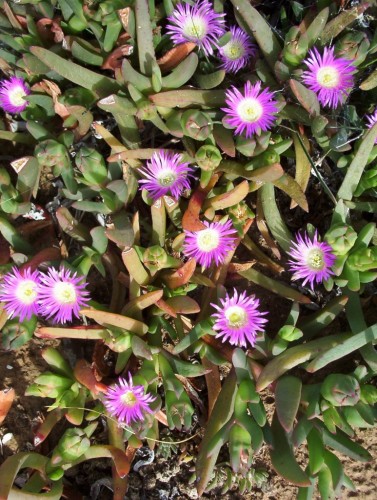More On Kunzea Pomifera (Muntries)
Kunzea pomifera (Muntries) In The Scrub
The photo shows some of the Kunzea pomifera (Muntries), that grow in this area. There were acres of the plants. The green patches on the ground are patches of Muntries. Very few weeds grow in the patches, just the occasional grasses. There were still berries on the plants and they were sweet to eat. I was surprised that the birds had not got to them all.
Kunzea pomifera (Muntries) As Bush Tucker
A few weeks ago the local green grocer had a plate of Muntries for customers to sample. They had small punnets of the berries (like those in which strawberries are packed and sold) to sell. This is the first time I had seen them in the fresh fruit market. The berries were quite large compared to the ones I had picked out bush. I know some selecting had been done to find plants yielding larger fruits. The problem is that the sweet apple-like flavour was missing completely. I was not impressed with the larger fruit as they had a floury texture.
Why is it that people are content with a loss of flavour for the sake of larger fruit and therefore the economic advantages associated with handling? The same thing has been happening to tomatoes for years. It was certainly doing a diservice to what is a delicious small fruit.
There is another article I have written about Muntries here.
Carpobrotus rossii (Pig Face) In Flower
This is the flower of the succulent plant in the previous post. There were only a few isolated flowers on the plants near the nest. This is a useful plant. Not only is it useful and decorative in the garden, it is one of the bush tucker plants used by the local Aboriginal group. The leaves and fruits were used as a kind of relish to be eaten with meat. The juice from the leaves is also said to be an insect repellant. As with any new thing, a cautious test should be done before slathering one’s skin with the juice of an unknown plant.
I guess the same could be said for the plants in the Aloe family. Aloe Vera is good on a number of skin ailments but I am never sure which member of the species is the one to use.
Santalum accuminatum (Wild Peach, Quandong)
What a find today! Husband found this on his morning walk today. I knew that they grew up the hill but I thought it was too early for ripe fruit. It is a wonder they are still there with the number of people who drive past.
At a Christmas break up a couple of years ago, one of the Australian Plant Society members made a fabulous Wild Peach Pie, which we had with cream. What a treat.
These seem to be shrubby plants here and I think are suckering plants. They are parasitic and grasses are used as the host in the home garden situation. I did hear that in orchard situations with the extra water and fertiliser, hosts are not needed. I need to research this as I want to have a smalll grove of these. See more information here.




